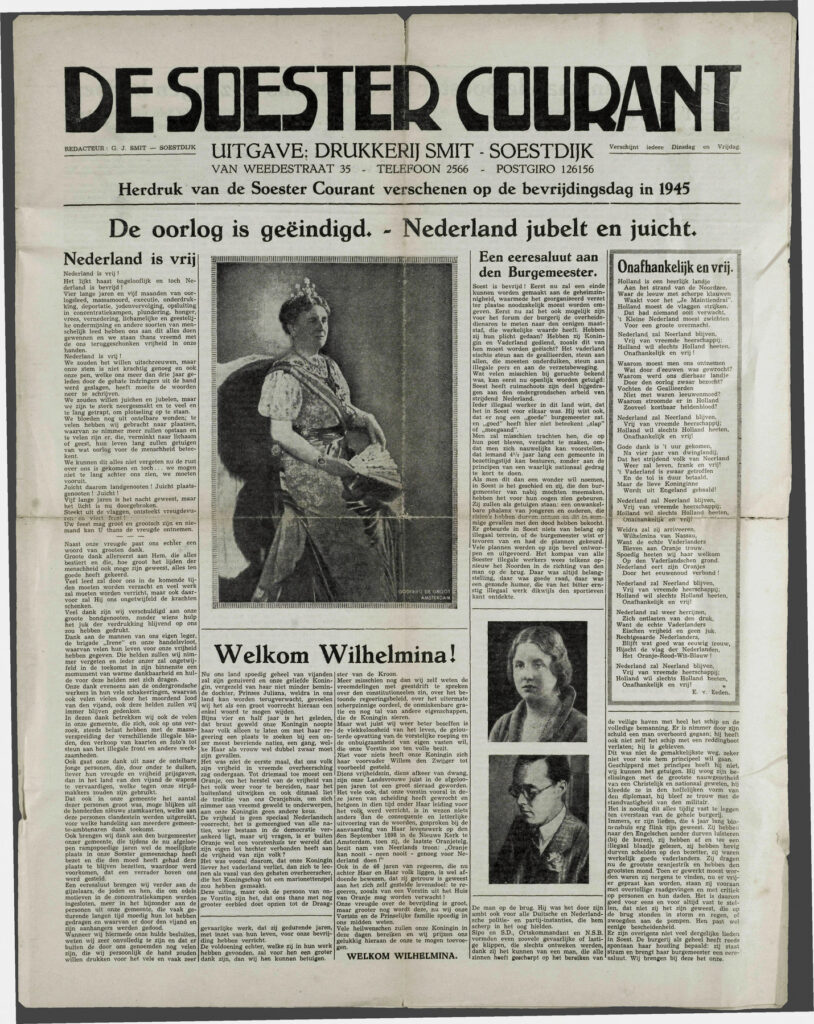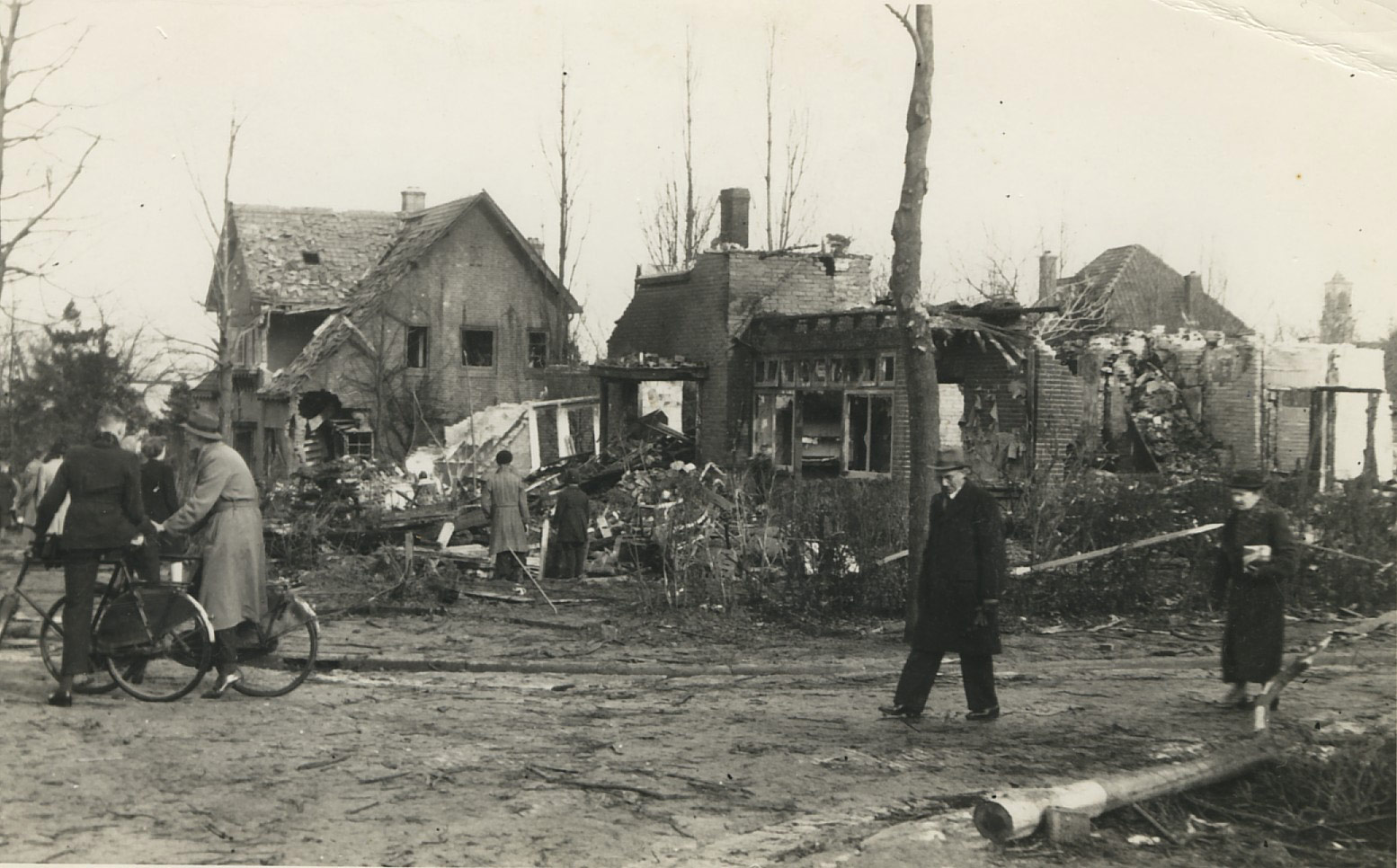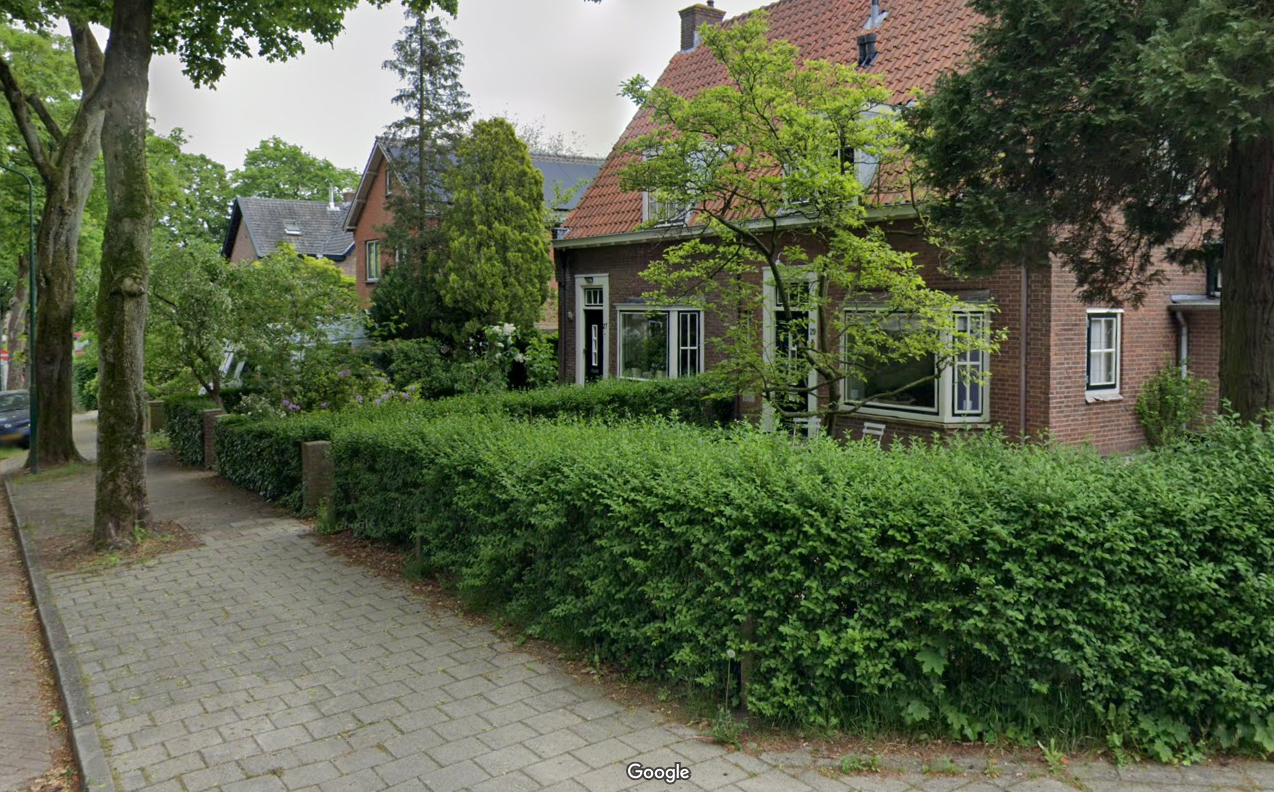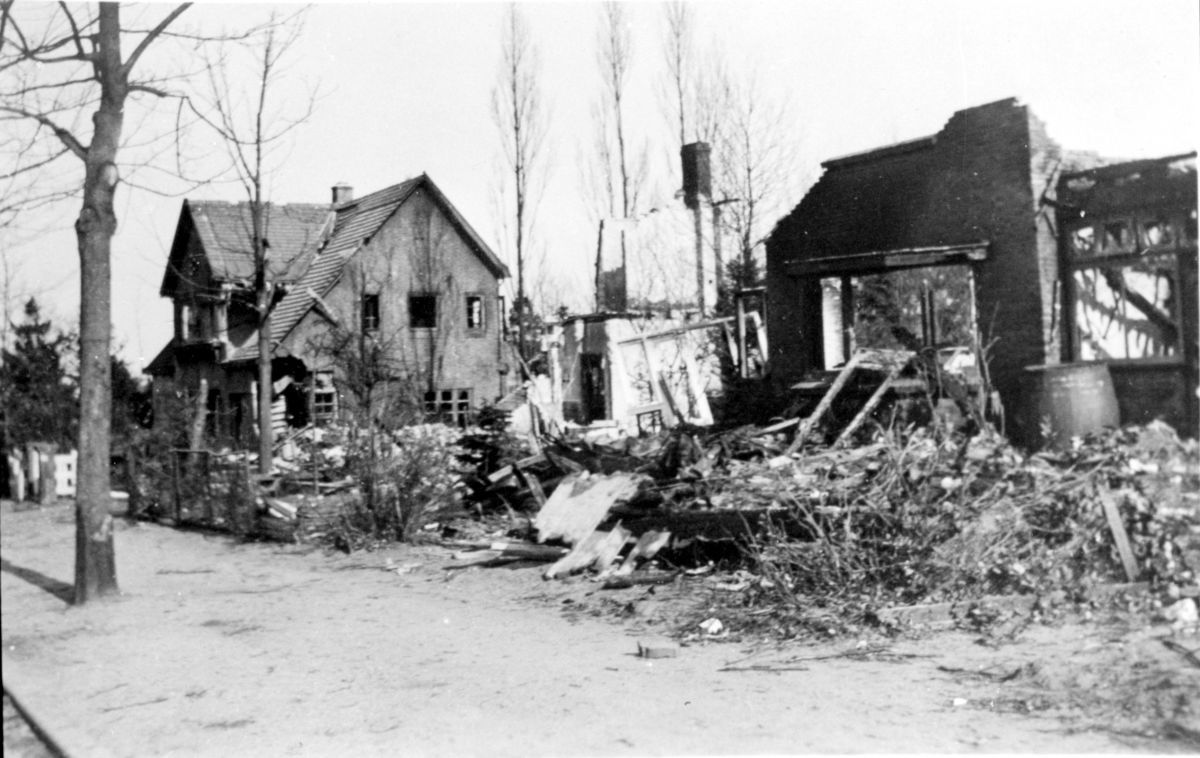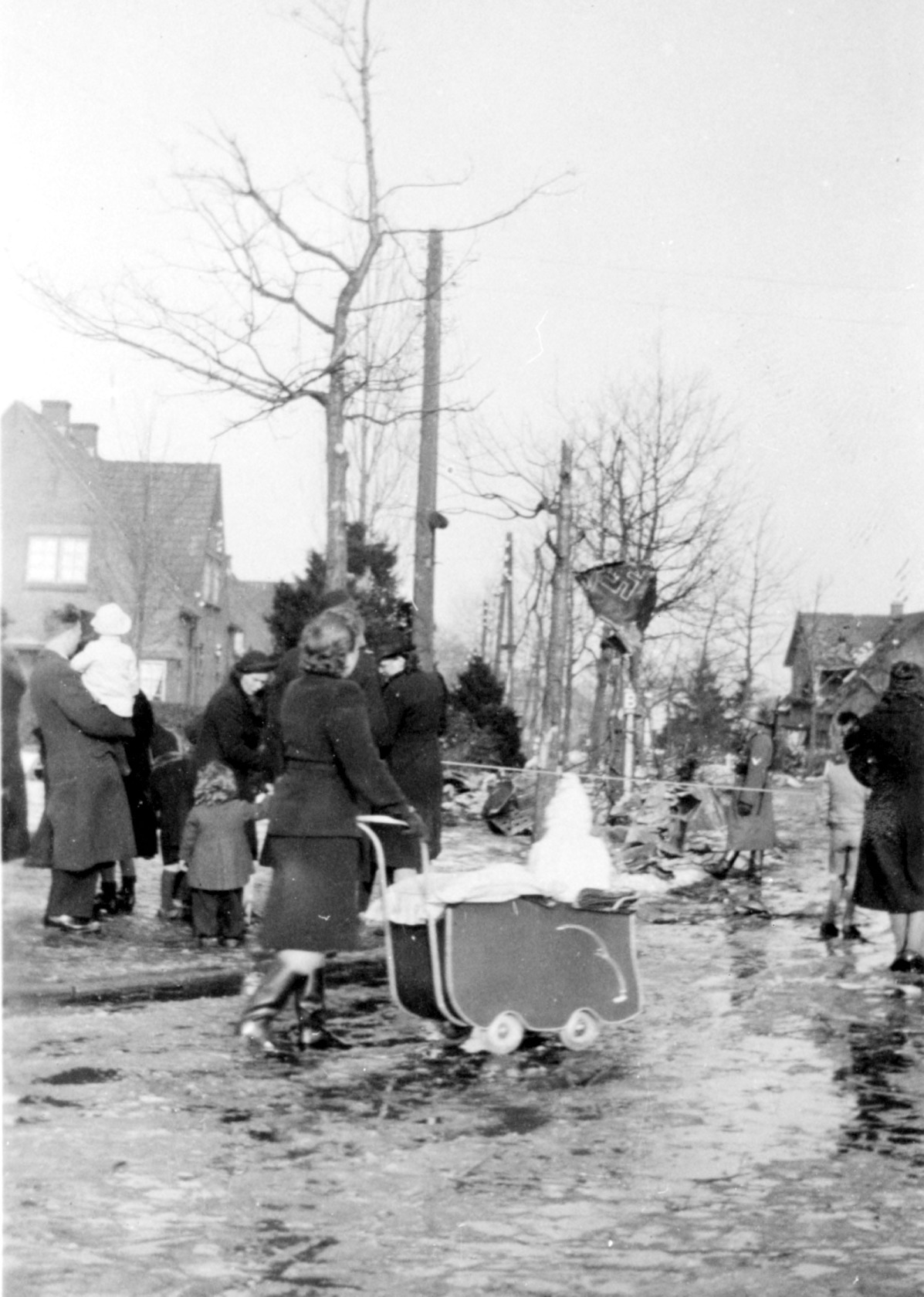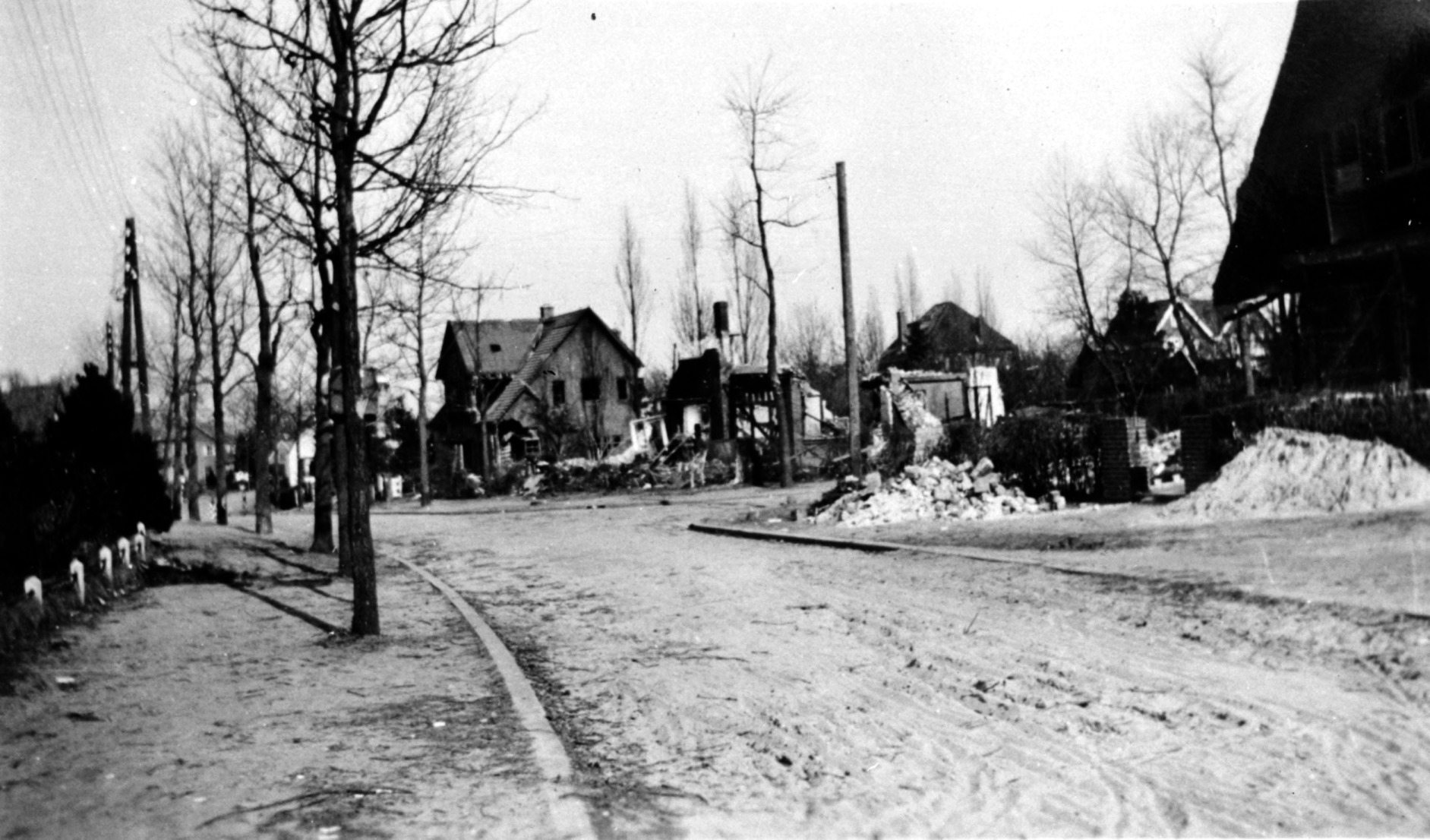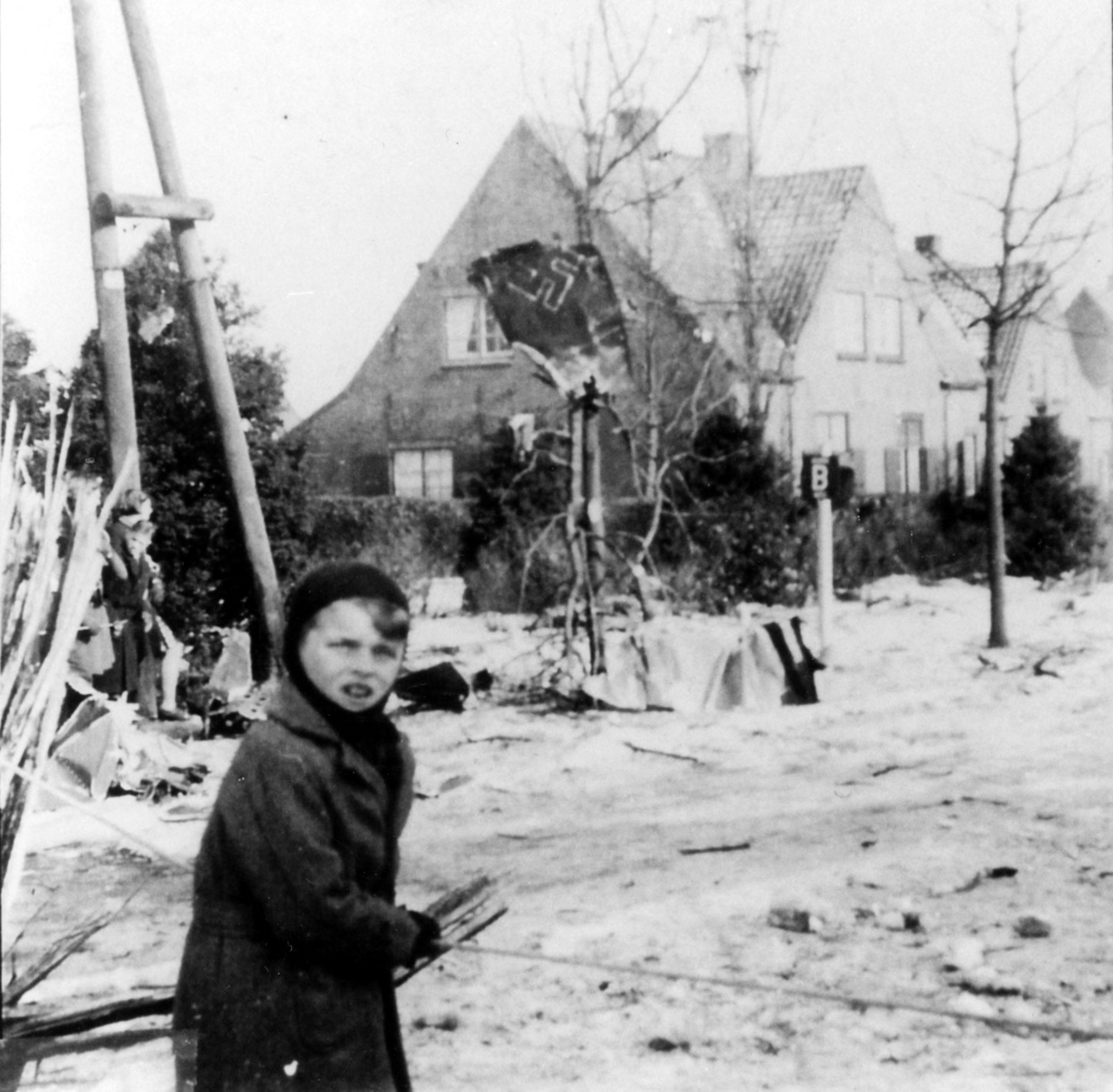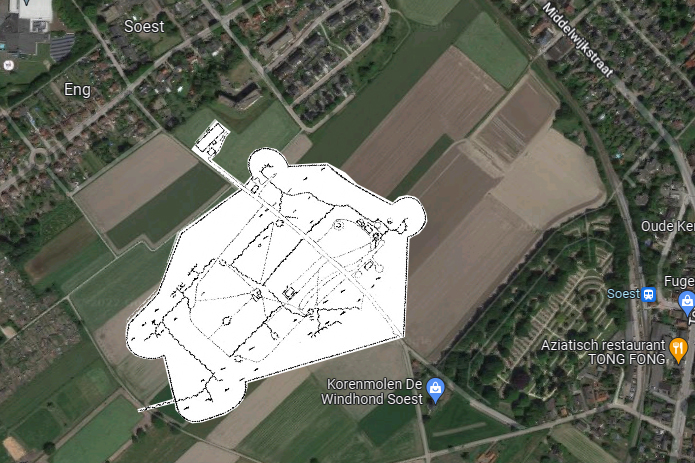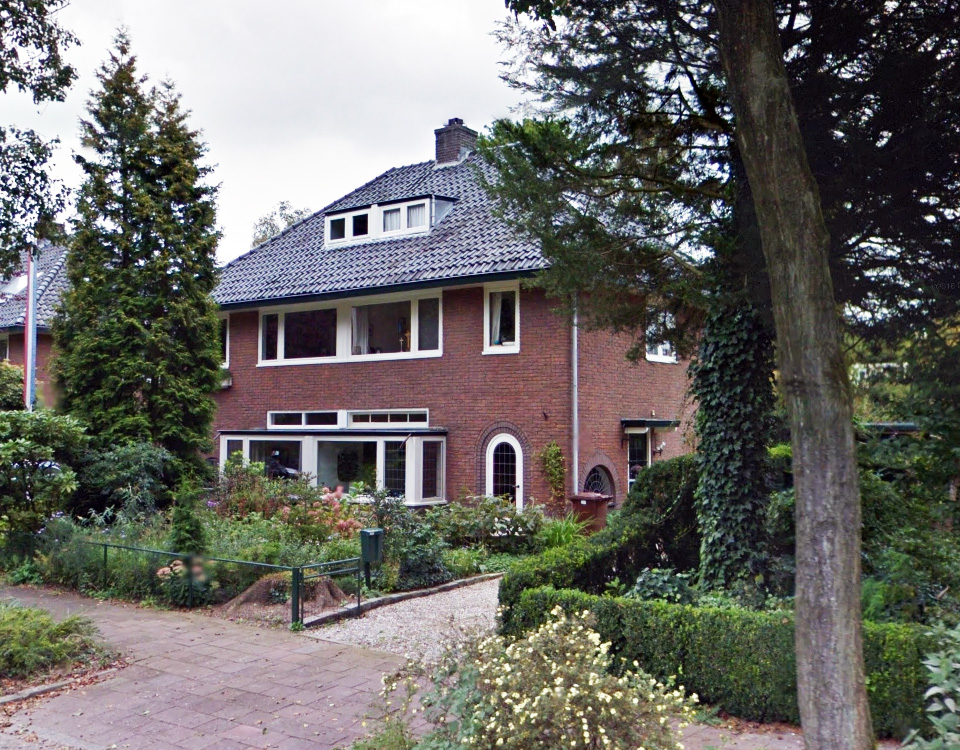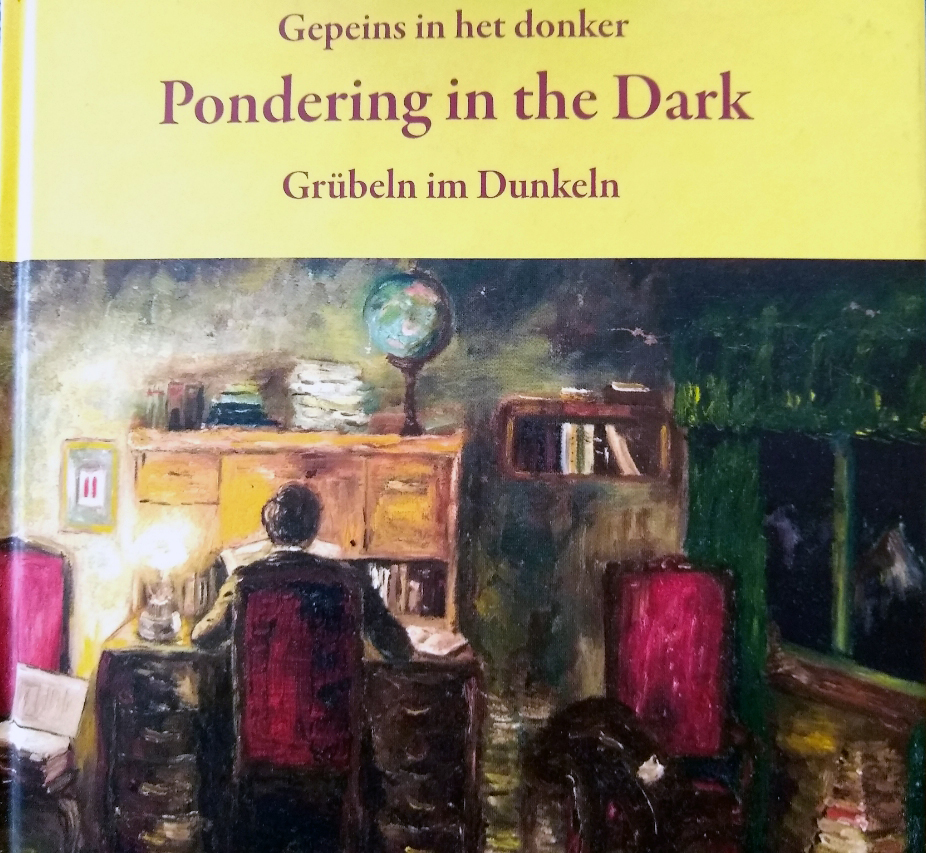Soest during Second World War (WWII)
Because I live in Soest I was curious about stories and visible memories concerning the Second World War. Therefore ‘What could I find about Soest during WWII’? The main source for this is of course the internet. But in my search I also went to Museum Soest where a small part of the exhibition is specifically about this period. And it turns out that some important events have already received attention on the internet so I will refer to them. This page gives an impression of what a small village and its inhabitants experienced during the war and what visible memories still can be found.
The newspaper ‘Soester Courant‘ is an important source as it was published just after the war and chronologically describes the events (on page 4) in Soest in the period 1940 – 1945.
,
Soestdijk
One of the striking parts of Soest is the Soestdijk Palace and the Soesterberg airport. When war broke out in the Netherlands in May 1940, Princess Juliana and Prince Bernhard fled from Soestdijk to England. The German officers took the opportunity and moved into the vacant palace.Only in 1945 did the royal family return to Soestdijk Palace.
As far as the Soestdijk Palace is concerned, I have not yet been able to find a single picture showing parts of German forces occupying it or passing by.
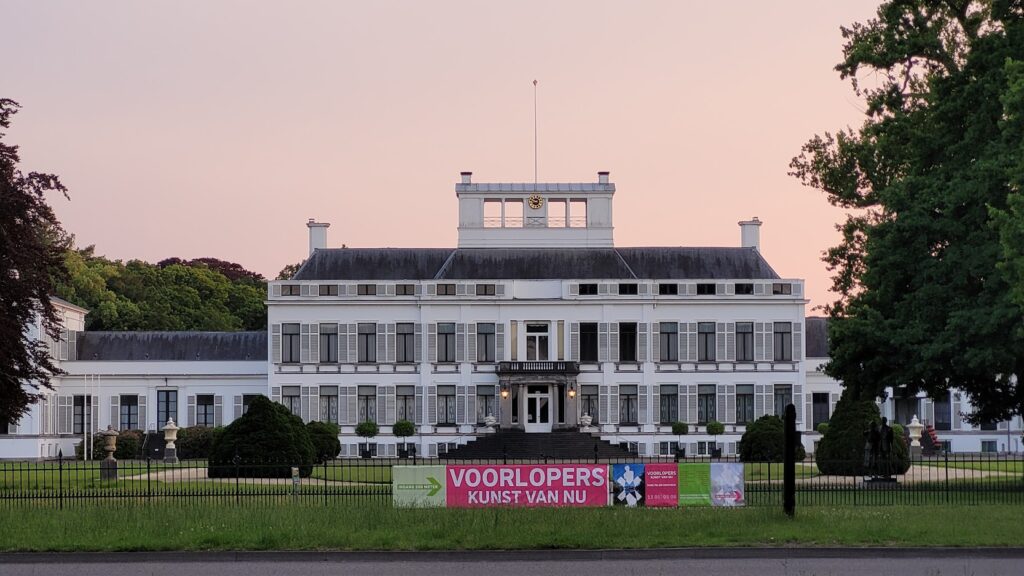
Talmalaan plane crash
On March 6, 1942 (21:18 pm) in the evening a German plane crashed in Talmalaan 29/27(see map) in an attempt to reach the Soester Engh for an emergency landing. With this crash two houses were completely destroyed and there were 6 civilian casualties (Mr Van Woudenberg and the Roelofs family). The crashed German plane was a heavy bomber of the type Dornier 217E-1. As far as known, the four German crew members were also killed in this accident.
Source pictures: Archief Eemland

| Victims | Death certificates (source: Het Utrechts Archief) |
|---|---|
| Hendrik Roelofs |  |
| Hedwig Emma Bertha Fabricius |  |
| Maartje Evidina Johanna Roelofs |  |
| Robert Herman Werner Roelofs |  |
| Petrus Hendrikus Woudenberg |  |
| Hans Thomas (18y) |  |
‘Flak’ (anti-aircraft guns) positions at Soester Engh
In 1910 a heath field near Soesterberg was used as an airport. In 1913 it was designated as the location for the Luchtvaartafdeling (Lva). Until 1938, Soesterberg was also the only military airport in the Netherlands. In 1940 the Germans renamed the airport to Fliegerhorst Soesterberg.
The presence of Fliegerhorst Soesterberg made it necessary to install air defence installations in the immediate vicinity. Apart from the airfield, there were wooden gun turrets in Soesterberg and several near Den Dolder. The heavier batteries were located on the Heidepark Bilthoven (later moved to Den Dolder), Leusderheide and on the Soester Engh in Soest.
Soester Engh during the war
The last location is a hill in Soest where agricultural land and meadows surrounded the area and therefore it was a good unobstructed view. To prevent attacks or sabotage, the position was protected by trenches, machine gun emplacements and barbed wire. This made the Soester Engh an off-limits area during the war.
The first construction of the ‘Flak’ area took place in June 1940. The Germans built underground shelters en erected reinforced gun emplacements. Photos below of the construction of the position on the Engh. The landscape of Soester can be seen in the background, such as the tower of the Oude Kerk on Torenstraat. The position was ready in August. In 1942 the position was reinforced…
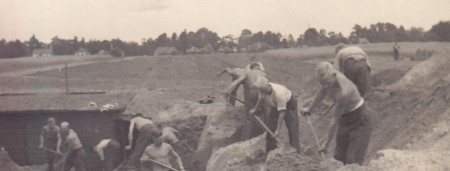
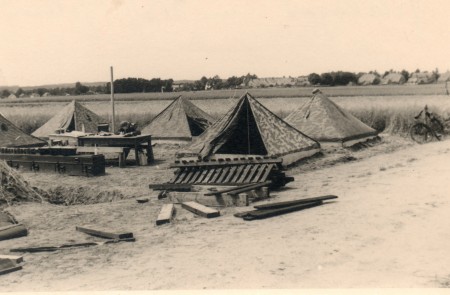
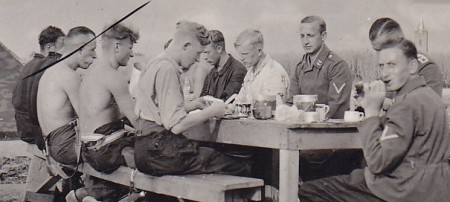
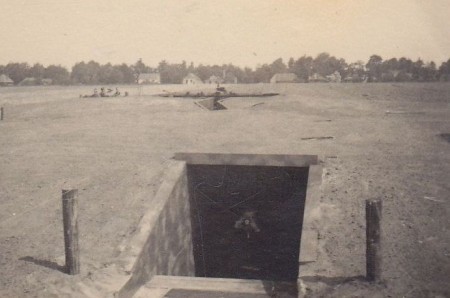
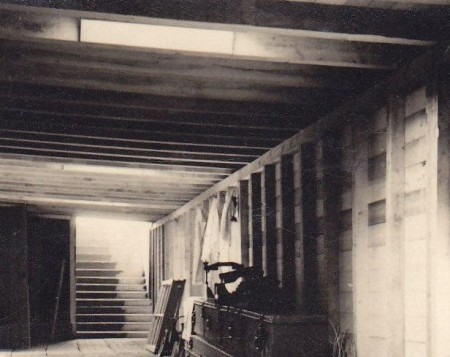
The map shows the extended and reinforced rack. On the Lazarusberg, near the Hellingweg, there was still a small light Flak position. This alternated between 2cm Flak and 3.7cm or 4cm. Most likely this was the associated protection of the heavy Flak position.
The Soester Engh position would be responsible for the shooting down of a Lancaster Bomber on August 15, 1944, where it crashed at the Ernst Sillem Hoeve between Soest and Den Dolder
The Germans abandoned the site at the end of September/October 1944. Only a small unit stayed behind. In April 1945 Canadian artillery bombarded the Soester Engh to attack German artillery. But they already had moved away. The local population sought protection in the underground bunkers of the complex.
Soester Engh right after the war war
After the war from July 1945, the cabaret company ‘De Molshoop’, led by Soester Benny Vreden, held performances every evening. The former bunker canteen served as a theatre hall, including a dance floor, with space for 100 visitors. The former sleeping area served as a dressing room for the artists. This first season lasted until mid-October 1945. The intention was to continue it after a break, but the farmers were eager to put the site back into use. On July 1946 the bunkers were blown up and the whole site cleared and ploughed to be used again for agricultural purposes.
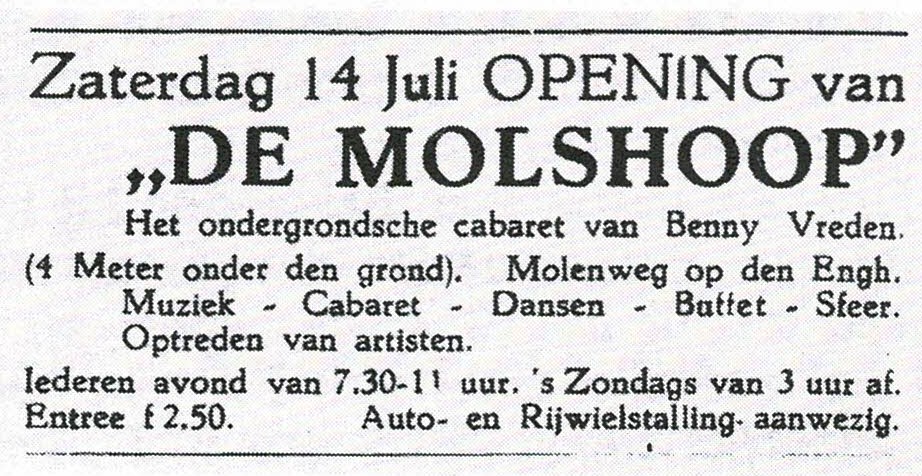
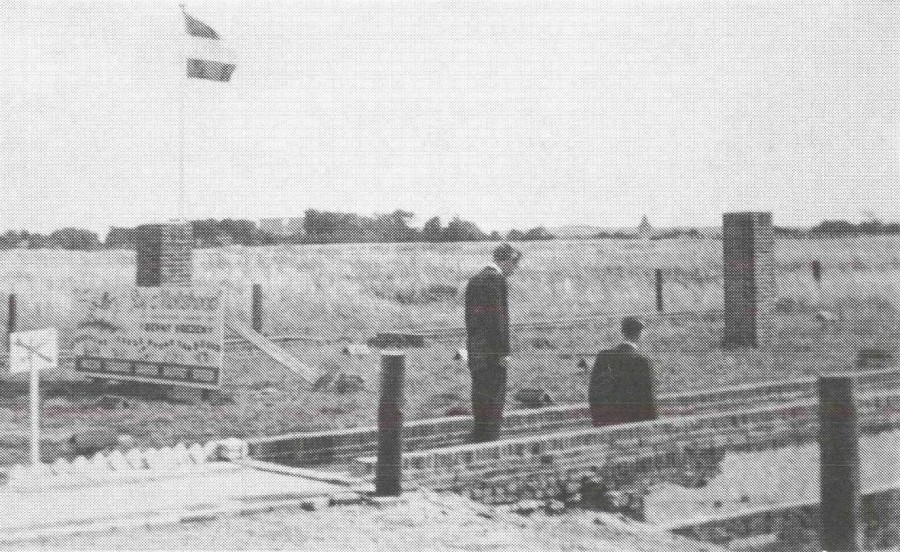
Jews in hiding – Noorderweg 11
Near the street where I now live there is a street which is called the ‘Noorderweg’. At number 11, part of a Jewish family in hiding comes to live there temporarily. The Geringer family had to flee Amsterdam for the raids on Jews. They lived at the Merwedeplein in Amsterdam and they were neighbors of the Frank family. At that time daughter Eva meets Anne Frank. Due to the raids and the hunting for Jews the family split up, with father and son ending up at 11 Noorderweg in Soest.
The main reason for hiding jews was for financial gain. During this time, the then 17-year-old Heinz made various paintings. Finally, in May 1944, another hiding place is sought for the whole family. It is no longer possible to pay for a stay in Soest. The whole family moved to the Kerkstraat 225 in Amsterdam. Unfortunately, this turned out to be a decoy address and they were put on the train to Auschwitz immediately after captivity on 19 May. On the train Heinz tells his sister that he has hidden the paintings and poems under floorboards in the house in Soest. They all arrive in Auschwitz-Bikenau on 22 May and that is the last time they have seen each other. Only Eva and her mother survive the camp. After the war, Eva remembers what her brother Heinze said about the paintings and goes back to Soest. Under the shelves they find paintings and a note: ‘Owned by Eric and Heinz Geiringer from Amsterdam, who are in hiding and will come back to get the stuff after the war.’ Dutch article about this: Soester Courant – In het donker Onderduikers aan de Noorderweg

